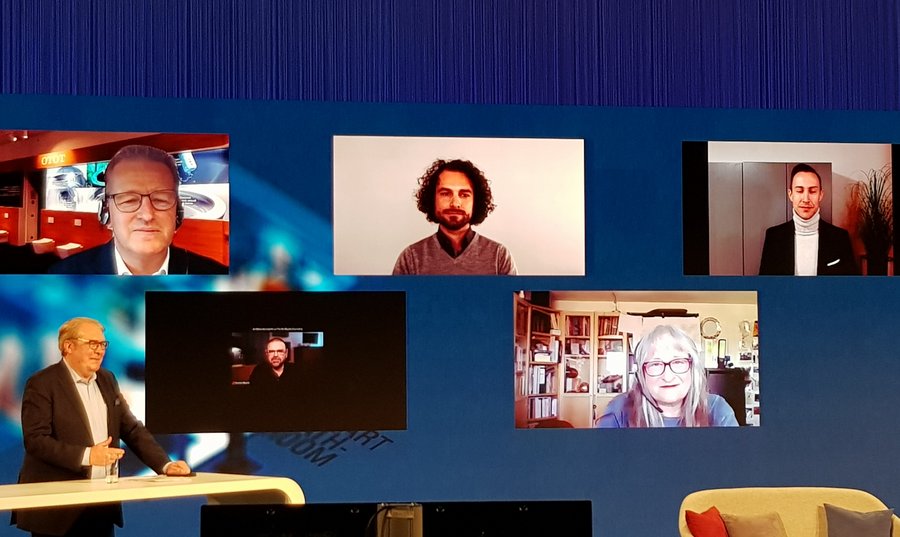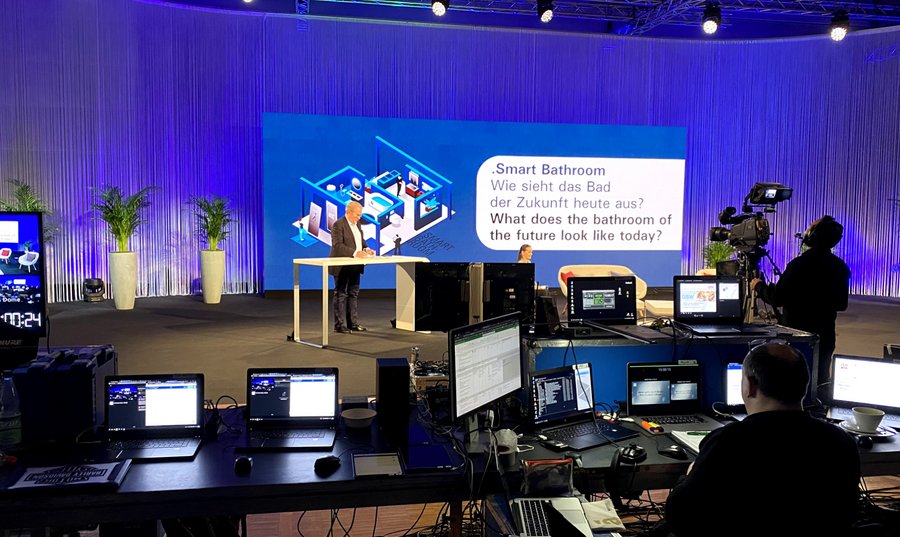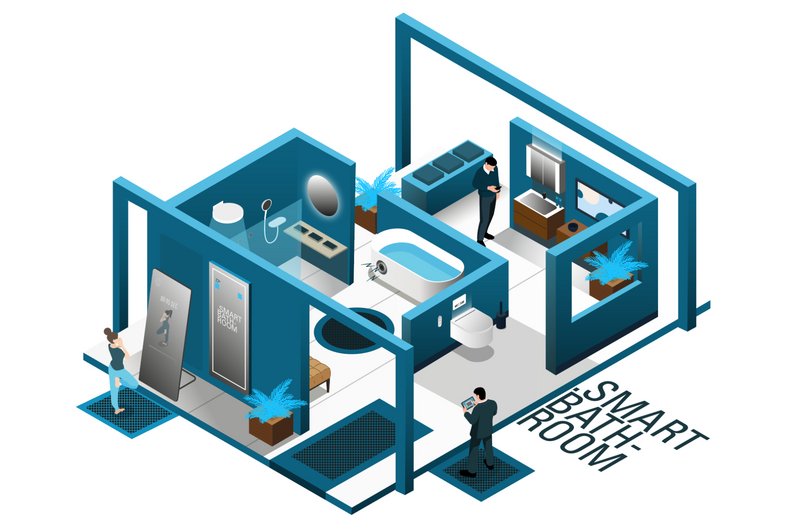Smart Bathroom: What does the bathroom of the future look like today?

On the topic of Smart Bathroom, the guests of the Pop up my Bathroom Magazine participated online: Hubertus Brüggemann (Toto), Matthias Oesterle (Phoenix Design), Fabian Kinzler (Hansgrohe), Lichtexperte Thorsten Moortz und Birgid Eberhardt (GSW)
Photo: FAR.consulting, Vereinigung Deutsche Sanitärwirtschaft e.V.
As if
deliberately arranged to reflect the Smart Bathroom subject matter, all the
guests who joined host Jens J. Wischmann, Managing Director of the German
Bathroom Sector Association (Vereinigung Deutsche Sanitärwirtschaft e.V. [VDS]),
on the third day of the Pop up my Bathroom Magazine at the ISH digital 2021 did
so online. The clip featuring the Pop up my Bathroom trend showcase on new
technologies in the bathroom illustrated just how smart our bathrooms already
are – or can be if we choose.
Whereas
just a few years ago the focus was still on individual products, nowadays it’s
more about creating an intense overall experience. More attention is being paid
to components like lighting, temperature, media and staging water, and the individual
aspects are being coordinated with one another as well. But generally speaking,
what can smart technology do today, and what should it be able to do?
“Ultimately
it’s about focusing on the user and their needs,” said Fabian Kinzler, Business
Unit Manager | Business Unit Digital at Hansgrohe, summing up his company’s
approach to smart technology. Although there are lots of gimmicks on the
market, he added, it’s important for these technologies not to get out of hand,
especially in the bathroom: what really matters is the added value they deliver
for the user. In the bathroom, believes Kinzler, technology should at most be
used additively and to provide support.
Pop up my Bathroom Magazin | Smart Bathroom: On day three, the Pop up my Bathroom Magazine shines a light on just how far smart technology has already come in the bathroom sector. Together with our guests, we’ll be taking a closer look at some of the latest products and discussing which groups of users embrace which smart tools.
Matthais
Oesterle, Design Director at Phoenix Design, takes a similar view and pointed
to the controversy surrounding voice control in the bathroom: “A lot of people
still find the idea disgusting, whereas others revel in it and think it’s
great. Time will tell whether it catches on.”
But smart
technologies are conquering the space behind the wall too, as Fabian Kinzler of
Hansgrohe reported: “Every year, more than 1.2 million cases of water damage
due to broken or leaking pipes are reported to insurers. And it’s not just a
question of the material cost for the insurer; there’s an emotional cost for
the people who depend on the bathroom too: sometimes they can’t use it for
several weeks. We have a smart leak protection system in our portfolio that’s
designed to identify the damage early on so that action can be taken at an
early stage.”
Toto defines
smartness in the bathroom more as a private matter that doesn’t take place
online. That approach focuses on the idea of omotenashi, the Japanese word for
hospitality. In this case, smartness means for instance that the toilet lid
opens automatically and initiates a pre-cleaning process. But Toto also aims to
promote wellness via the toilet, “by having it provide complete analysis of
usage behaviour and analyse excretions, thus providing results that can help
the user lead a better life,” as Hubertus Brüggemann, Sales Director German
Markets, Toto Europe, explained.

Change of seat: While host Jens J. Wischmann leads through today's program from the desk, Carina Bastuck introduces from the armchair.
Photo: FAR.consulting, Vereinigung Deutsche Sanitärwirtschaft e.V.
The
bathroom is used in diverse ways – by different generations, for relaxation and
hygiene, for health and grooming, but also for entertainment. “For me, the
bathroom is the most exciting room in the home because so much happens there,”
said Birgid Eberhardt, Director Smart Home / AAL (Ambient Assisted Living) at housing
development and construction company Gesellschaft für Siedlungs- und
Wohnungsbau Baden-Württemberg (GSW). She pointed out that sensor technology and
pre-set thermostats for different users (which are particularly appreciated by
nursing staff and caregivers), as well as entertainment devices, don’t work on
an analogue basis. Her credo: “In the Smart Bathroom we need electricity,
electricity, electricity! We need electricity in the bathroom more than in any
other room. And that should be taken into consideration at the planning stage,
because retrofitting the bathroom is expensive. Anything I don’t factor in
right from the start will put obstacles in my way in the future. And the future
is now!”
The bottom
line of the discussion? A bathroom should only ever be as smart as is
beneficial for its users – because the bathroom is still regarded as a retreat
within the home, where we’re sometimes quite content to forget all about our
smart gimmicks for a while. Even so, it’s important to take smart applications
into account when the bathroom is still at the planning stage. Or as bathroom
expert Thorsten Moortz so aptly put it: “I hope bathroom planners will keep
what we’ve been discussing here in mind. Because integrating and harmonising
smart applications is precisely what a smart bathroom planner should be doing.”
All the
programmes can be viewed in full length on our new YouTube channel.
Further information:


